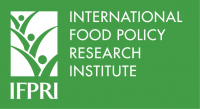Do Higher Prices Mean Safer Food? Evidence from Kenyan Maize Markets

Aflatoxin, a toxin produced by the Aspergillus fungus, poses a serious health threat in developing countries. The toxin grows in a number of staple crops worldwide, such as maize, and chronic exposure can lead to liver disease, cancer, and even death. While proper testing and processing of crops can reduce aflatoxin levels in finished food products like maize flour, many developing countries lack the regulatory environment needed to enforce such testing and handling requirements.
Kenya has some of the highest aflatoxin exposure rates in the world and has experienced several severe outbreaks of aflatoxin contamination. Some maize processors test crops prior to buying, rejecting those with high levels of contamination, but previous research has found evidence of poor testing procedures and even corruption at many mills. Kenyan consumers seem to be more and more aware of the risks of aflatoxin contamination and are demanding higher food safety standards. In 2014, an experimental auction found that when consumers were informed that the maize had been tested for aflatoxin, bids went 7 percent higher. However, government regulations for food safety testing and handling remain weak, meaning that the decision to engage in proper procedures still remains in the hands of processors. So how can consumers know which companies to trust?
A study conducted by IFPRI researchers Christine Moser and Vivian Hoffman looked at results from over 900 aflatoxin tests of 23 Kenyan brands of maize flour and found that price was strongly tied to contamination levels. The lowest-priced brands in our sample were 25 percent less likely to meet the regulatory standard for aflatoxin (no more than 10 parts per billion in Kenya) than the highest-priced brands. There are several explanations for this discrepancy. First, well-known brands may be more careful about proper testing and handling procedures, as they would have more to lose if an aflatoxin outbreak were to be linked to their product. Second, as aflatoxin exposure is gaining more attention, millers may be anticipating stronger regulations in the near future and thus may be more willing to prepare for more stringent standards, if they can afford to do so. Finally, aflatoxin contamination may be correlated with other product quality characteristics, such as moisture content or refining; since higher quality brands will likely look for these quality characteristics, lower levels of aflatoxin contamination may simply be a by-product of their other quality standards.
As the study shows, relying purely on voluntary compliance with food safety standards is a roll of the dice. The fact that only the higher-priced maize millers seem to routinely engage in proper aflatoxin testing and handling means that poor consumers, who cannot afford these higher quality products, are still at risk of greater aflatoxin exposure.
For the full results of the study, read "Firm Heterogeneity in Food Safety Provision."
